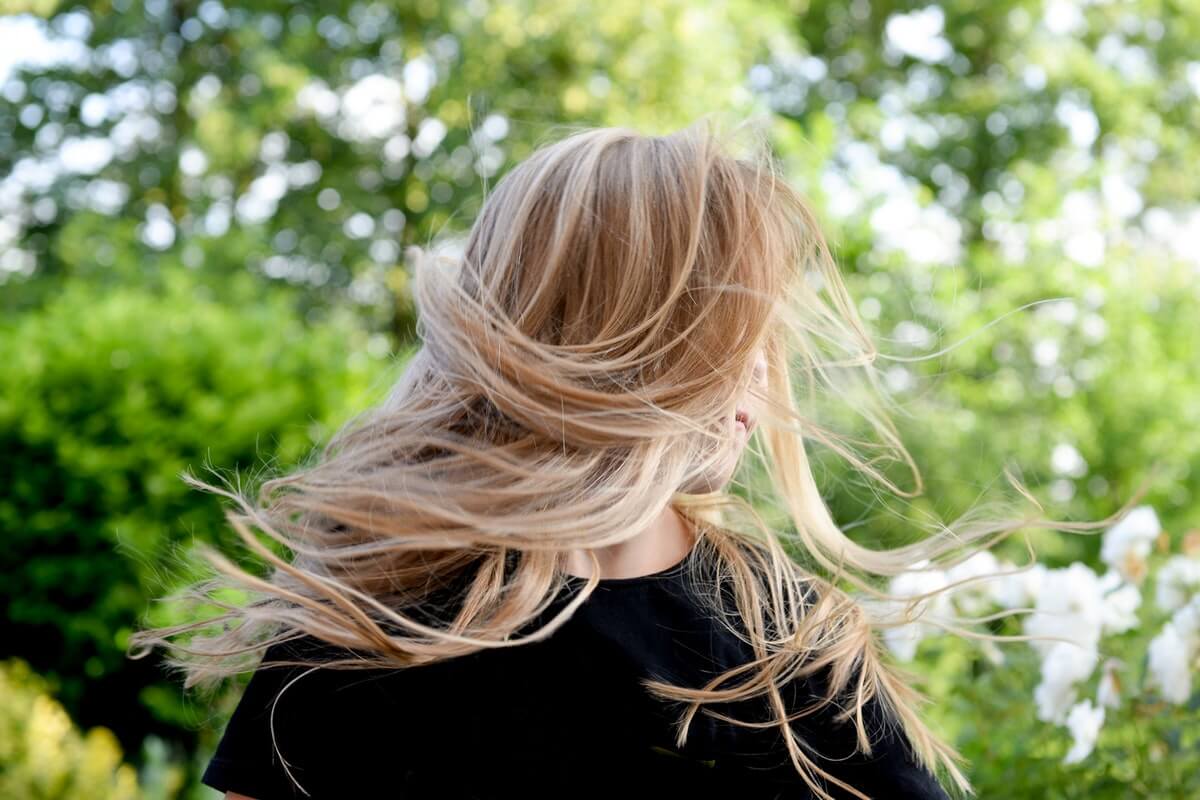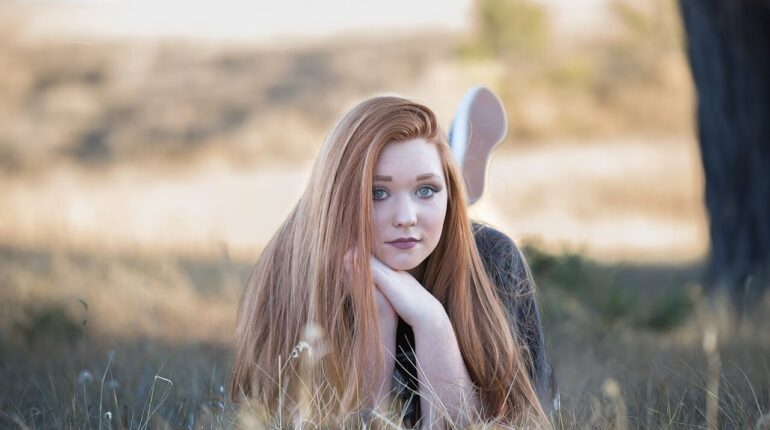If you never cut your hair, it’ll keep growing forever, right? Well, actually no. That’s not how hair growth works.
In fact, never getting a trim or haircut could limit how long your hair grows. But even if you have perfectly healthy hair and you never cut it, there’s a limit to how long our hair can get.
Read on to learn what happens if you never cut your hair, why regular trimming is essential and how to take care of long hair.
Does Hair Grow Indefinitely?

One of the biggest myths when it comes to hair is that it will keep growing and growing if you never cut it.
That’s not true at all. If that were the case, then people from cultures and religions that don’t cut their hair would have trouble dealing with never-ending miles of hair.
In reality, the longest most of us can grow our hair is about three feet, with a few people having the right genetics to grow it out to five feet.
Each strand of hair goes through a lifecycle composed of four phases.
During the growth stage of hair (called the anagen phase), hair grows at a rate of about half an inch per month. This stage can last anywhere between 3 and 5 years.
If it lasts 5 years, it means your hair will have grown 30 inches or 2.5 feet (0.5in * 12 months * 5yrs) if you don’t cut it at all.
By the way, not all your hair is growing at this time. About 90% of your hair is in the anagen phase at the same time.
After growing for some time, hair stops growing and actually shrinks. This is the catagen phase. Luckily, only 5% of hair is at this stage at any given time, so you generally don’t notice any drastic thinning.
But factors like stress and poor nutrition can increase shrinkage at this stage, causing noticeable thinning.
The next stage is the telogen phase, during which hair is dormant. It lasts about three months and only 10-15% of your hair is in the telogen phase at the same time.
The final stage is shedding or the exogen phase. You lose between 50 and 100 hairs daily, and it’s replaced by new growth.
So, as you can see, hair doesn’t keep growing forever. It’ll grow for a few years, shrink a bit, go dormant for a few months, and eventually fall off. New hair grows in its place.
What Happens If You Never Cut Your Hair
Now that we know hair will not grow forever if you don’t cut it, what actually happens if you never take a clipper or pair of scissors to your hair.
Of course, hair will grow longer until it hits its maximum limit of 3-5 feet. Generally, however, bad things happen if you never cut your hair. Here are four big ones.
1. Split Ends
Split ends is the biggest issue with letting your hair grow untrimmed.
Split ends, split hairs or trichoptilosis are normal and usually hard to prevent with everything that we do to our hair.
All the heat, combing and products weaken the hair, causing the end of the hair shafts to split or fray.
If you look at the hair of someone who hasn’t shaved or trimmed for years, you’ll immediately notice how frayed, dry and frizzy the ends of their hair look. That’s caused by split ends.
If you leave split ends unattended, the hair will continue splitting up the shaft. At some point, you might find that up to 5 inches or more of your hair is split. This splitting will eventually lead to serious hair thinning and shedding.
So you may think you are letting your hair grow longer when you don’t cut it, but in reality, you might end up with short and less hair because of split ends.
To avoid split ends, you need to trim away the ends regularly to keep the breakage from traveling up the hair.
A pair of scissors is one of your best friends when it comes to growing longer and healthier hair.
2. Dry & damaged hair
You may not have thought about this, but longer hair deals with a lot of stuff that gradually damages it.
It rubs against your clothes, it rubs against the back of chairs when you sit, it traps more dust and pollution, you constantly rub against it when you wear earphones or glasses, and so on.
It’s also harder to keep long hair well moisturized.
What you’ll find is that as your hair grows longer, it tends to feel drier and weaker. The combination of dryness, frizz, dullness and split ends makes it appear unhealthy.
That’s not to say that you can’t have long and healthy hair. But you need to know how to take good care of it, and that includes regular trimming.
3. Harder to Take Care Of
Taking care of long hair is a whole different kettle of fish compared to maintaining short or average length hair.
You have to constantly look out for and cut out split ends, moisturization is crucial and the constant tangles can drive you crazy.
If you already find taking care of shorter hair to be tedious, may reconsider getting long hair.
Keep in mind that this depends on your hair type. If you have thin and straight hair, it might actually be easier to take care of it when it’s longer.
But if you have curly or extra-thick thick hair, it can be a lot of work to maintain when it’s long.
How To Deal With Split Ends – Dusting vs. Trimming
There are several things you can do to prevent split ends such as avoiding too much heat, choosing gentle hair styles, being careful which products you use, being cautious when you comb your hair, and keeping your hair hydrated.
But it’s usually impossible to fully prevent split ends. The best you’ll be able to do is slow them down and reduce their severity.
That’s why it’s important you know how to deal with split hairs especially if you plan to let your hair grow long. Split ends are the biggest enemy to healthy long hair.
The most common and effective way to deal with split ends is trimming. You can do it at the salon or at home. You split your hair into sections then trim off the last inch or two of your hair depending on how bad the split ends are.
This is why it’s important to keep split ends in control. Otherwise, you might find yourself chopping off a lot of inches to remove the split ends. Regular trimming keeps the split ends from traveling up the hair.
The other way of controlling split ends is dusting. It’s ideal if you want to get rid of split ends without cutting your hair.
Dusting is similar to removing fuzz from clothes. Because it requires a keen eye and hand, it’s best to have it done at the salon.
Your stylist will smoothen your hair (especially if you have wavy or curly hair) so that the split ends are easier to see. Then they’ll use a pair of scissors to remove just the split ends without trimming the bottom of your hair.
Here’s a video showing the difference between trimming and dusting.
How To Take Care of Long Hair
If you are tired of constantly cutting your hair, letting it grow out is a great option. Of course, as we’ve already discussed, it will not keep growing forever. But it can get pretty long.
Long hair requires a slightly different kind of care compared to short hair. Here are some tips that will keep your hair lustrous and healthy as it lengthens.
- Regular trimming and dusting is a must for controlling split ends. It won’t make your hair grow longer or faster, but it will keep it healthy and prevent breakage. A trim every 2-3 months is usually enough to keep split hairs from developing beyond the tips of your hair.
- Look for lightweight hair products that nourish and moisturize it without weighing it down.
- Minimize the use of heat. When you have to use heat, apply a thermal protectant hair spray first to reduce heat damage.
- Protect your hair from friction. When you sit down, set your hair such that it’s not trapped between your back and the back of the chair. On your bed, switch to a silk or satin pillowcase or wrap your hair in a silk scrunchie or sleeping cap.
- Use a boar bristle brush or a wide tooth brush to brush your long hair without putting stress on it. This is especially important if you have thick or curly hair. Also, never brush hair when it’s wet as that’s when it’s weakest.
- Don’t wash hair too often. Over-washing strips out natural hair oils and makes the hair dry. This, plus the friction of constantly rubbing your hair, increases the risk of split ends. A once-a-week wash is enough for most people. And when you wash hair, apply the shampoo only on the scalp to avoid any friction on the hair shaft.



